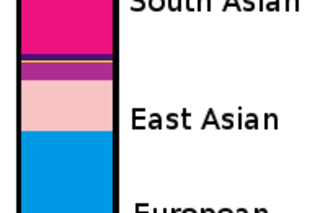Several months ago I put up a post which reviewed the geographical connections within the total genome content of the Cape Coloureds of South Africa. These peoples (plural because distinctive ethnic groups such as the Griqua were subsumed into this category in the 20th century) are of diverse origin, though generally their African and European ancestry has been highlighted. To the left I've reedited a plot which illustrates the inferred proportion of ancestry from various groups in modern Cape Coloured populations. Note that there is a substantial proportion of Asian ancestry, both South and East Asian. This makes historical sense as during the period of the founding of the Cape Colony a substantial number of Southeast and South Asian slaves were transferred from the Dutch East Indies, as well as from Madagascar, which itself has a Southeast Asian component in its population. Additionally, observe that the Bushmen & Khoikhoi element ...
Cape Coloureds: an instance of a generality
Explore the diverse ancestry of the Cape Coloureds of South Africa, revealing significant Khoisan contributions.
More on Discover
Stay Curious
SubscribeTo The Magazine
Save up to 40% off the cover price when you subscribe to Discover magazine.
Subscribe




